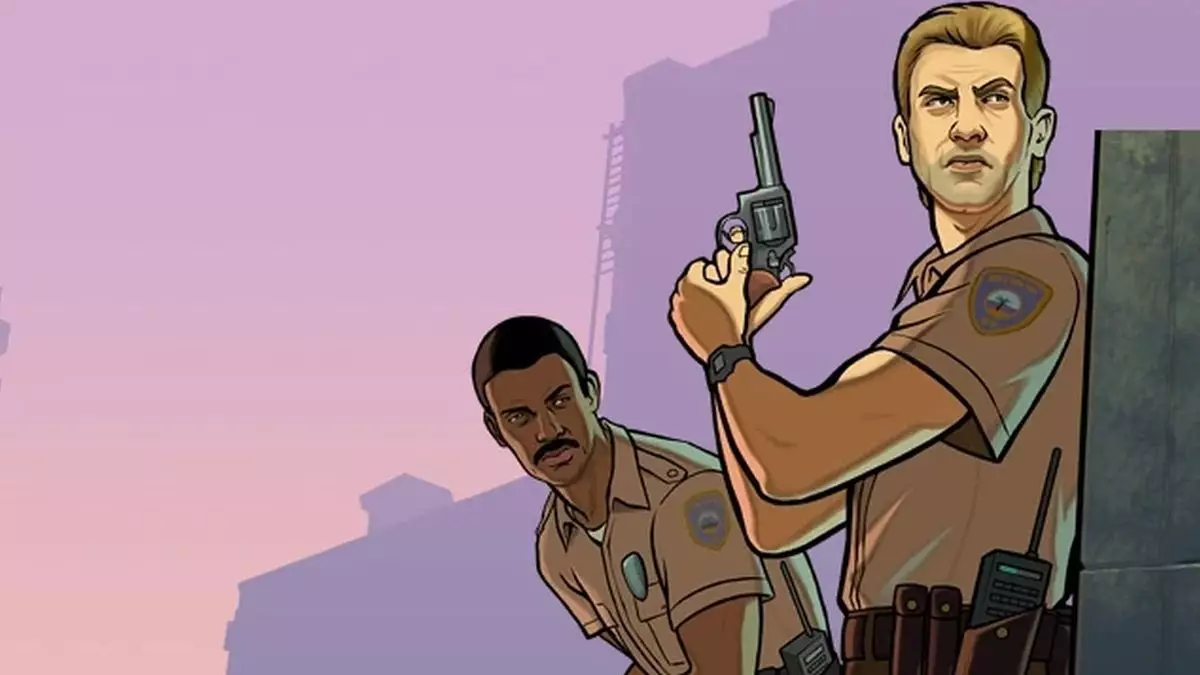In the exhilarating world of speedrunning, players race against the clock, executing precision movements and strategies to showcase their mastery of a game. One recent incident involving speedrunner Joshimuz during a GTA: Vice City run has brought attention to the unpredictable nature of this endeavor. In a critical moment of his ‘No Major Glitches’ run, Joshimuz encountered an unexpected hurdle that threw him off course—a police officer seemingly equipped with superhuman speed. The incident highlights the quirks and glitches present in a game beloved by fans and speedrunners alike, as well as the broader implications of bugs on gameplay.
Joshimuz was deep into his run, well over the ninety-minute mark, when he attempted to complete a mission at the Cherry Popper ice cream factory. As he maneuvered his ice cream truck, he unwittingly triggered a one-star wanted level. In most circumstances, such a minor infraction would be easily dismissed by a skilled player; however, in a baffling turn of events, Vice City’s law enforcement did not exhibit the typical AI behavior. Instead, a police officer transformed into something akin to Barry Allen, a character known for his uncanny speed as The Flash, sprinting across the landscape to apprehend Joshimuz. The abrupt arrest derailed his attempt and sparked outrage within the speedrunning community.
What’s fascinating about this situation is not just the immediate impact on Joshimuz’s run, but the insights shared by Obbe Vermeij, a veteran developer associated with the original GTA series. Following the incident, Vermeij stepped in to shed light on the underlying bug that allowed such a ridiculous scenario to unfold. He explained that the police officer’s comically rapid response was due to a flaw in the game’s AI related to vehicle interactions. Essentially, the officer miscalculated his approach, mishandling the navigation code that should have guided him toward the vehicle’s door instead of engaging in “warp” behavior.
Vermeij’s explanation points to the intricacies developers face when programming AI systems in open-world environments. In a game that operates with myriad moving parts, such as NPCs, vehicles, and an expansive map, even a minor glitch can lead to significant consequences for players. The complicated nature of the code governing NPC actions reveals just how challenging it is to create a perfectly functioning game environment. Despite the hiccup, Vermeij took a step back, humorously reminding the community that he was not responsible for the specific code that failed, maintaining a light-hearted distance from the chaos that ensued.
As speedrunning continues to grow in popularity, incidents like the one experienced by Joshimuz serve as a reminder of the unpredictable nature of gaming—especially in older titles like Vice City. Speedrunners have to navigate not only the intricacies of the game mechanics but also the unforeseen anomalies that can arise due to bugs and glitches. The experience emphasizes the need for flexibility and quick thinking, as even the most experienced player can find their plans derailed in an instant.
This scenario has galvanized discussions within the speedrunning community about the best ways to handle unexpected setbacks. Is it fair to ascribe value to a run that is marred by glitches? Should categories exist for runs that are free from significant bugs? These questions continue to provoke debate, as speedrunners strive to strike a balance between skill and the real-world complexities of game behavior.
The blend of speedrunning and unanticipated game behaviors has highlighted the importance of understanding both the coding intricacies and the culture surrounding these high-stakes competitions. As players push against time, they must also navigate the chaotic, glitch-ridden world crafted by developers years ago. The incident featuring Joshimuz is not merely another anecdote in the speedrunning realm; rather, it reinforces the notion that, in gaming, the unexpected can often be just as thrilling as the quest for a new record. Ultimately, it’s a testament to the enduring legacy of games like GTA: Vice City that they continue to provoke laughter, frustration, and communal dialogue even decades after their release.

